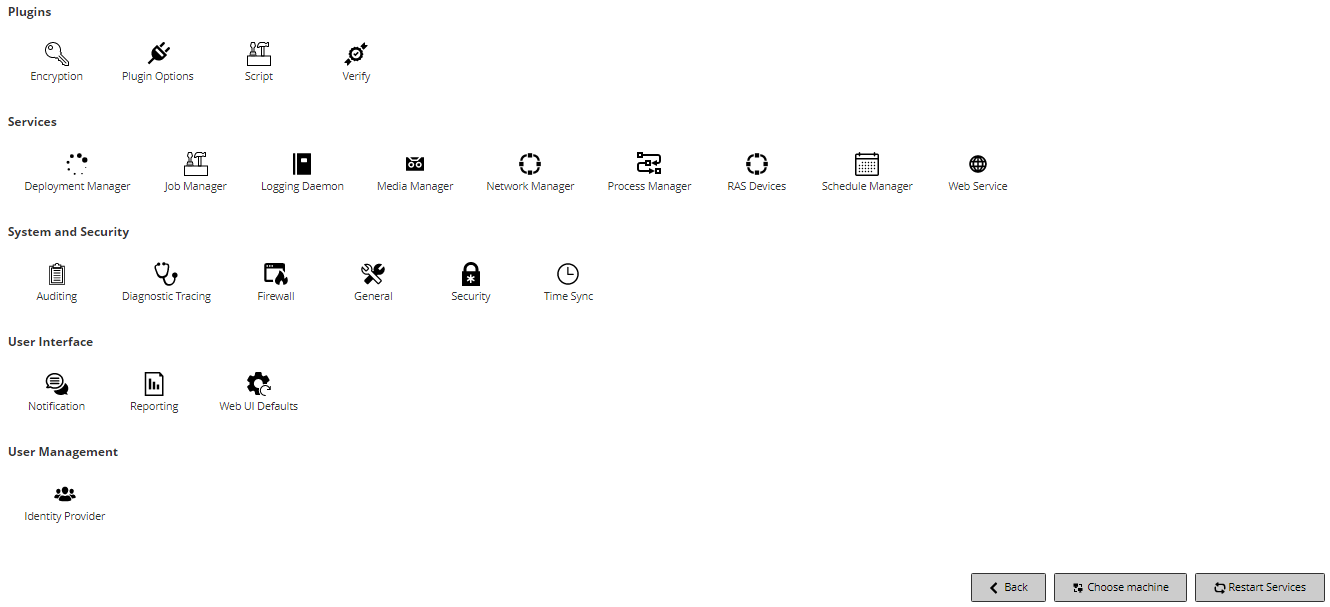The procedure for performing restores using the Plug-in for FileSystem is similar for both standard and virtual clients. The backups are restored from the virtual client node and not the actual client node. When you submit a restore job, the plug-in communicates with the cluster service to determine the controlling node and targets this machine for the restore.
|
NOTE: For cluster backups and restores, the virtual client name is displayed on the Job Status page and the actual client name is displayed on the View Logs page. |
NetVault runs with some default settings that can be customized to suit your environment. You can view and modify these settings from the Change Settings link in the Navigation pane. The default settings are available for the following services and components.

| |||||||||
| |||||||||
You can view and modify the NetVault Client settings by clicking Choose Machine on the Server Settings page or from the Manage Clients link in the Navigation pane.
The Txtconfig utility provides a text-based interface to customize various settings for the server and client machines. This utility is available on all supported operating systems. The Txtconfig utility resides in the bin directory under the NetVault installation directory. You must be logged-in with Administrator privileges on Windows and root user privileges on Linux and UNIX to use the Txtconfig utility. For more information, see Configuring default settings using Txtconfig.